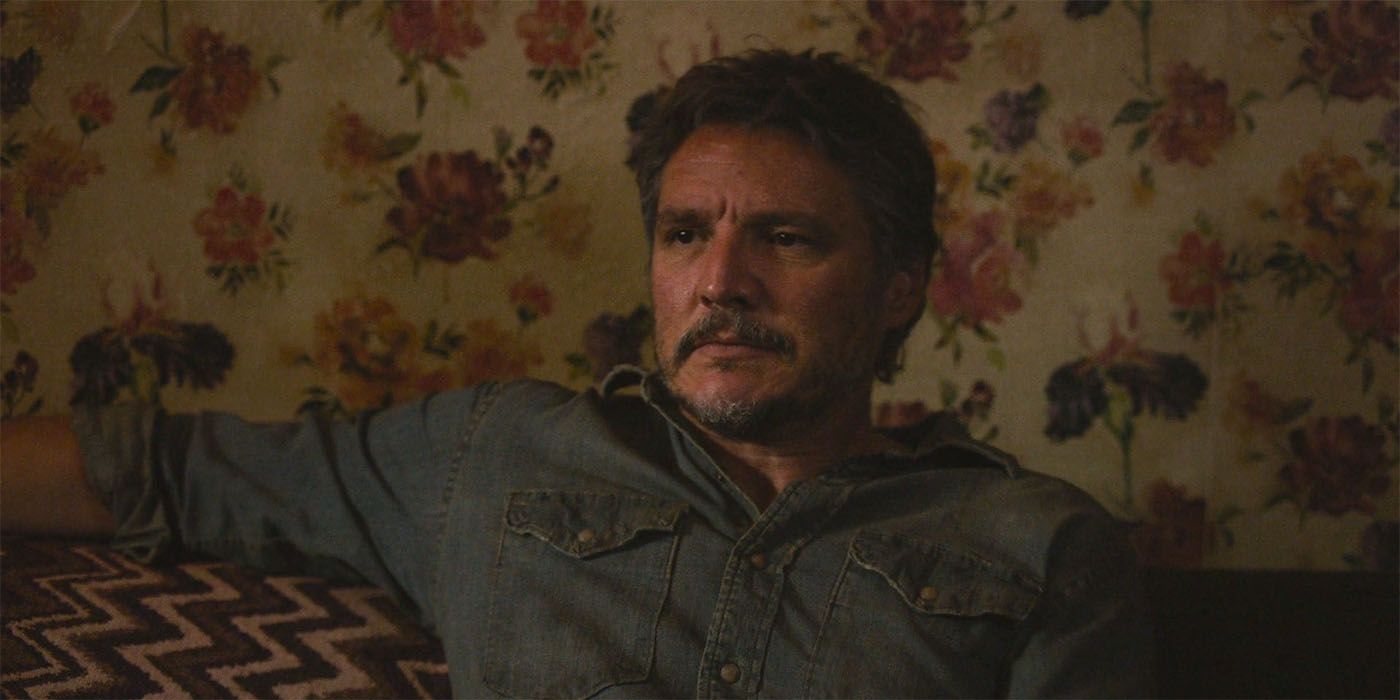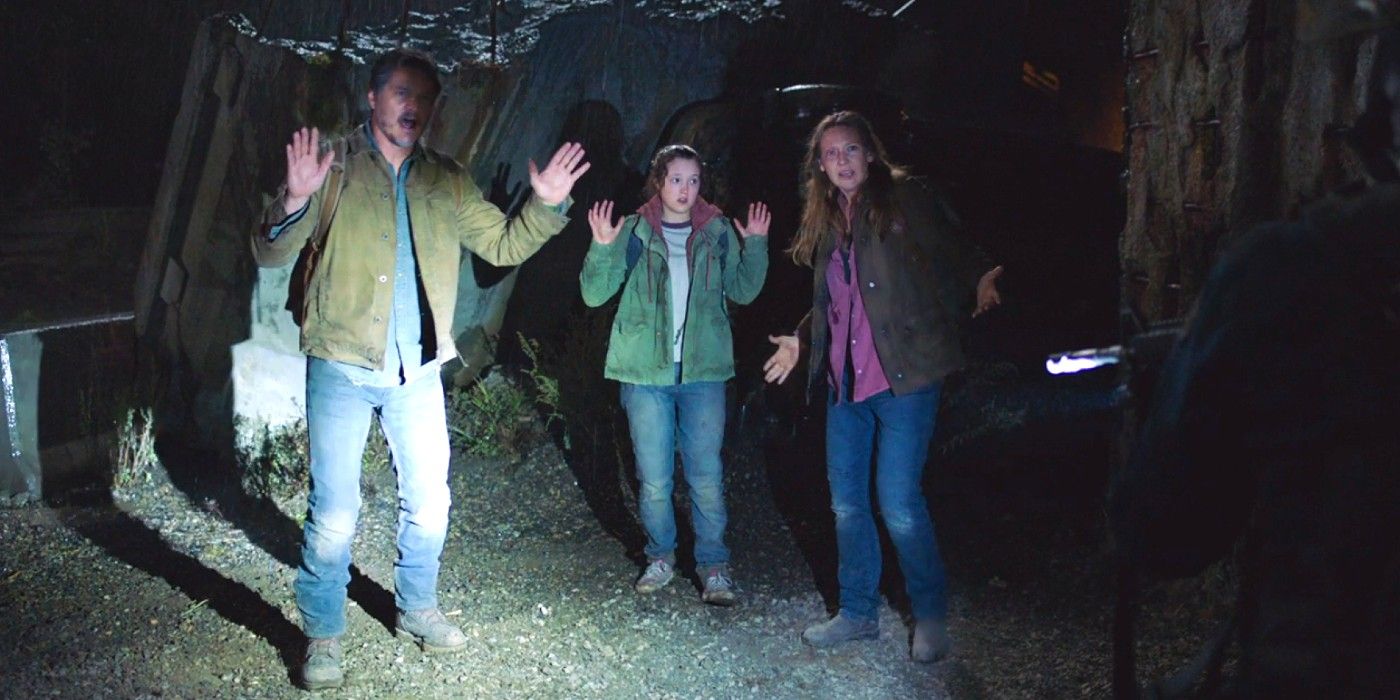Spoilers for The Last of Us episode 1 below!
The Last of Us creators, Craig Mazin and Neil Druckmann, recently revealed that the premiere episode was originally two separate episodes. The new zombie horror HBO show is based on the critically acclaimed 2013 PlayStation 3 video game of the same name. Pedro Pascal stars as Joel Miller, a rugged survivor who is tasked to escort precocious 14-year-old orphan, Ellie (Bella Ramsey), across a post-apocalyptic United States to the militant revolutionary faction known as the Fireflies. With Ellie revealed to be immune to the fungal infection that has taken over the planet, the idealistic group believes Ellie may just hold the key that might save the world.
During HBO's The Last of Us Podcast, Mazin and Druckmann reveal that The Last of Us episode 1 was originally trimmed from two episodes into one.
Druckmann explains that the premiere episode was to conclude after the 20 year time-jump as Joel throws an infected child into a burn pit. However, due to important story feedback from the show's producers, episode 1 and 2 were merged to draw viewers into the relationship between Joel and Ellie. Read what Mazin and Druckmann explained below:
Druckmann: If we want to talk about things that we didn't get right, episode one used to be episode one and episode two...It used to just end on the "20 Years Later," and seeing the kid, and Joel throwing the kid in the fire. And that was it. That was episode one.
Mazin: Well, HBO, I think correctly -- this is where you want good partners at the network, right. I always feel like the best network executives are there to honestly represent the audience. That's what they do best. They're not supposed to write things for us. They're supposed to tell us how they feel, and we're supposed to have faith in their proxy ability. And in this case, our proxies there -- Casey Bloys and [Francesca Orsi] -- were saying [episode one] is not necessarily going to make me want to come back. The whole season, the whole story of The Last of Us is about Joel and Ellie. If we only get a little glimpse of her at the end of episode one, and we don't bring them together, and we don't understand their journey, and just ends with a kid dying and then another kid dying and then credits, people may just not want to come back. It was important for them, because they love the show. It would hurt all of us in our hearts if they don't want to come back.
Druckmann: And in hindsight the feedback makes complete sense. We had a version where we ended on Ellie looking out the window, and you see that she's changed. Oh, your like, "There's a mystery here." But we haven't established why you should care about this kid. We care about his kid because we know where this journey's going and how important this kid is. I remember when I worked on the game, this was always like a test for people. I'd be like, "What's the inciting incident?" And they'd be like, "Oh, when Sarah dies, obviously." Nope. It's when Joel runs into Ellie. That's the thing that changes his life. And I'm like, "We didn't get to that moment. We have to get to that moment. That's the start of this journey." So that's why in hindsight that feedback makes complete sense and the episode is so much better for it
Why the Changed Episode 1 is Better
The crux of The Last of Us' dramatic narrative is the relationship between Joel and Ellie. Without introducing the characters to each other in the first episode robs audiences of an important narrative plot point. As Druckmann explained, the original The Last of Us video game's narrative catalyst was not the loss of Joel's daughter, but when Joel and Ellie finally meet. That is when their lives are changed forever and kick off the rest of the story. Without Joel meeting Ellie, there is no The Last of Us.
The first 45 minutes of The Last of Us episode 1 focused on Sarah (Nico Parker), her love for her father, and his love for her. Sarah's death was brutal, a traumatic moment that is buried deep within Joel, forming a foundation for his character's actions after that event. Joel's change is seen when he tosses a dead infected child onto the fire when his colleague was emotionally unable. The woman appears to retain a semblance of her humanity while Joel is far gone. Although ending on that moment would have worked thematically, the episode still had to get to Ellie to work narratively.
Ending with Joel and Tess (Anna Torv) smuggling Ellie out of the quarantine zone effectively hooks the audience, begging them to come back. The episode's conclusion teases the depth of Joel's PTSD as he nearly beats a man to death, Ellie's immunity to the fungal infection, Tommy's absence, and a future storyline with Bill (Nick Offerman) and Frank (Murray Bartlett), who sent an encoded message of danger to Joel's empty apartment. With The Last of Us continuing on Sunday, audiences can begin to see Joel and Ellie's character dynamic take shape.
Source: HBO's The Last of Us Podcast


